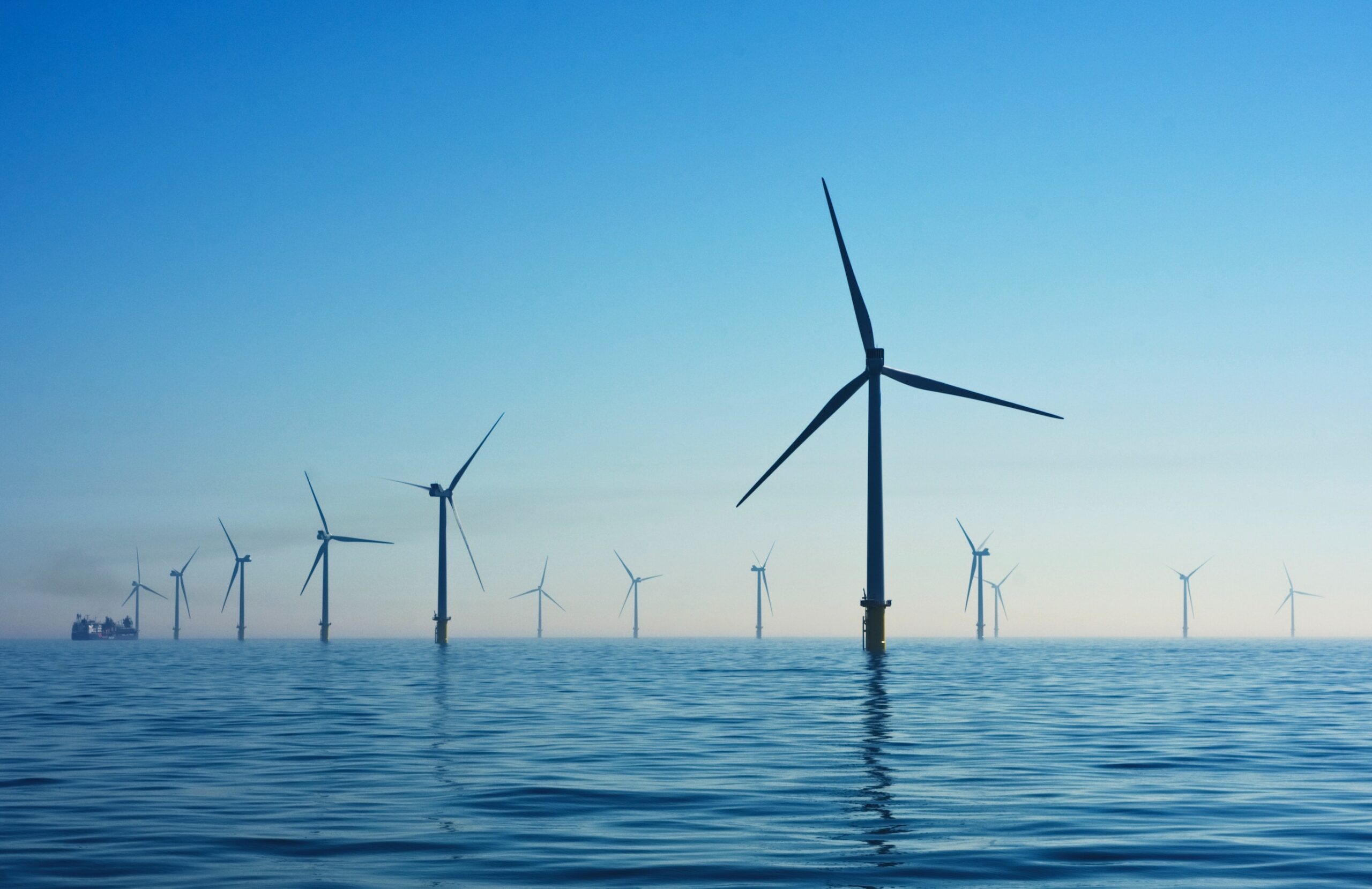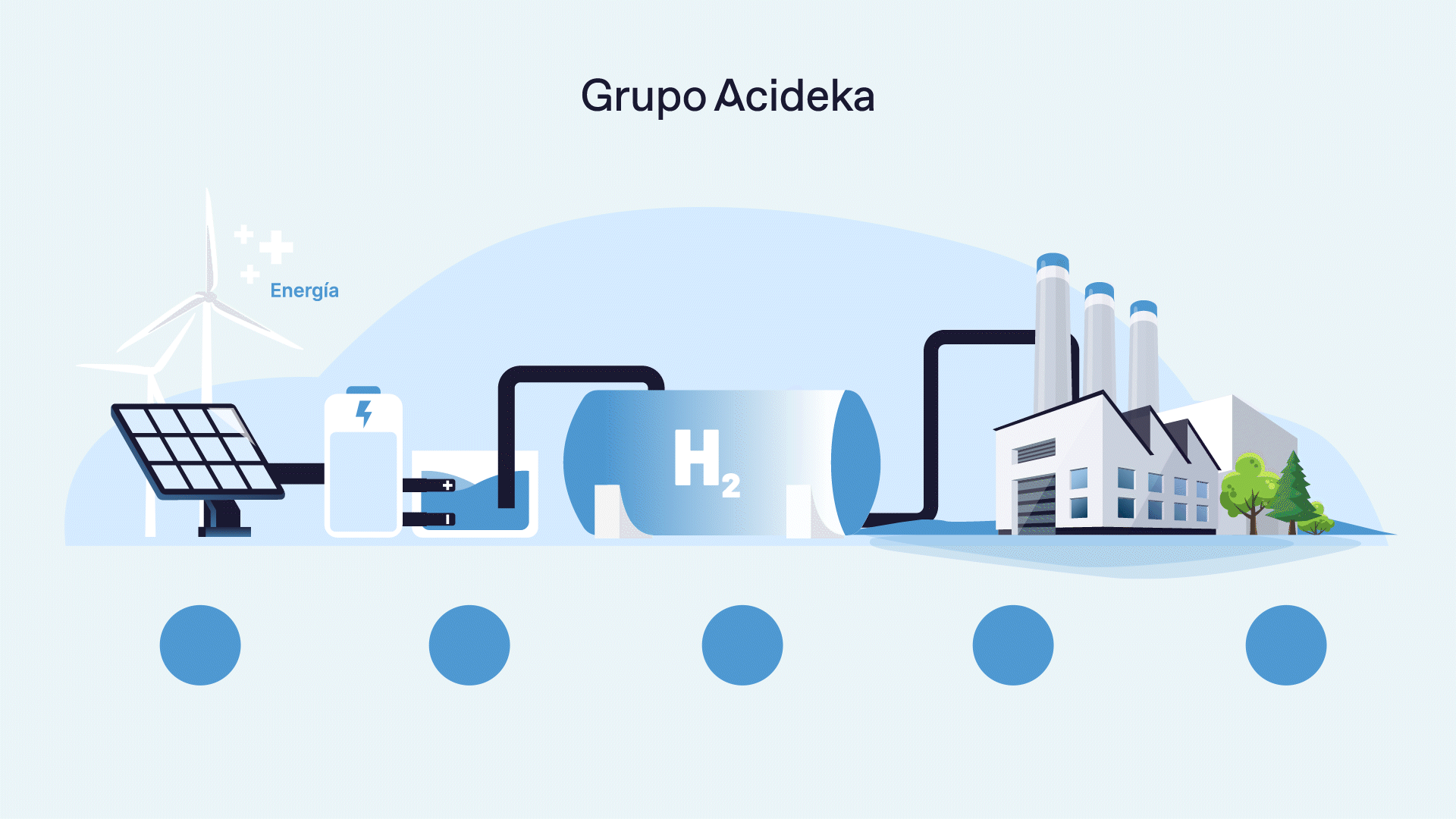
The number of watts we need to function is increasing all the time. It is estimated that by 2040 the global demand for energy will increase by around 30%. In the majority of European countries, which are dependent on coal and oil, this means more CO2, which in turn means pollution.
Green hydrogen – the solution to end CO2 emissions?
Green hydrogen – the solution to end CO2 emissions?
How can we avoid it? How is ACIDEKA GROUP doing its bit? What does decarbonisation of the planet mean?
A different world for 2050: more accessible, efficient and sustainable, driven by clean energy such as green hydrogen.
Before getting into details, we’ll explain the reasons for the nicknames of the different types of energy, which are linked to their origin:
- Blue or grey (from natural gas). -> Produces CO2
- Black (from coal). -> Produces CO2
- Green is electricity that comes from renewable sources, such as solar or wind.
Here at Acideka Group, the words innovation and environment are in our DNA, and that’s why, since 2020, we have been working on various projects in our Dekitra plant (in Lantarón).
- Project to harness hydrogen: In our hypochlorite plant, we are aiming to generate energy and steam using hydrogen boilers or hybrid boilers.
- Project to set up a solar park nearby: this would help us to generate electricity for our own consumption.
These two projects will not only help us to significantly reduce CO2 emissions, but furthermore, the hydrogen obtained as a by-product in the hypochlorite plant via electrolysis can be considered green.
What is Green Hydrogen and how can it be used as fuel?
It does not exist freely in nature. In order to use it, first it has to pass through a production phase called electrolysis.
What does it consist of? Electrolysis is a process in which electricity is applied to water to break up the molecules into hydrogen and oxygen.
Hydrogen is one of the simplest chemical elements which, when used as a fuel, releases energy without emitting pollutant gases.
If that electricity is obtained from renewable sources, we will produce energy without releasing carbon dioxide into the atmosphere. In numbers, this would mean a saving of 830 million tonnes of CO2 per year, which would otherwise be produced by burning fossil fuels. And replacing all of the grey hydrogen in the world would mean 3,000 additional renewable TWh per year, practically Europe’s entire electricity demand at the moment.

Disadvantages
Although this process is not new, and has been in use for some time, it is still expensive and not very profitable.
Green is currently 2.5 times more expensive than grey. It will depend on the progress of the decarbonisation of the planet, the price of the renewables used to produce it, and the cost of the competitors, diesel or natural gas.
But… are we in time?
If we want to meet the target of zero carbon emissions by 2050 then using hydrogen as a fuel could decarbonise some very difficult sectors: aviation and shipping, as well as the chemical and steelmaking industries.
Europe has lost a fair few technological battles, but green hydrogen is still so recent that we have time to make our mark on the situation by manufacturing and setting up electrolysers.
The solar park near Dekitra aims to offer the possibility of converting surplus into a clean and storable fuel (hydrogen) which can then be used to generate clean energy for our own consumption.
The main challenge for fulfilling its mission is that its whole life cycle needs to be clean, a challenge we are already working on here at Acideka Group.
